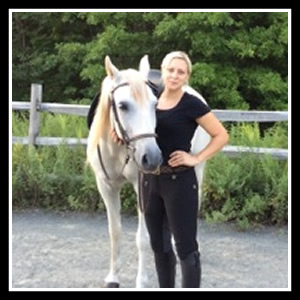Video Critique: Pia and Fiona Submission 1

San Diego Horse Trainer Will Faerber from Ar2tRide discusses the video sent in by Pia and gives suggestions for further improvement.
3 responses to “Video Critique: Pia and Fiona Submission 1”
Leave a Reply
I do often look at the commented videos and have a question to something what you often mention.
You say we should send the horses more foreward and mean foreward under the horses body. but how can i cause the horse to do that instead of walking just faster?
I know a few horses who “resist” to take bigger steps if you ask it in trot; they prefer to galopp instead. Can you explain, how you get this more foreward out of the horse?
Usually I go back to the walk and let the hindquarters move away. But I’m not able to do this in the trot.
Thanks for your comment on that!





I do often look at the commented videos and have a question to something what you often mention.
You say we should send the horses more foreward and mean foreward under the horses body. but how can i cause the horse to do that instead of walking just faster?
I know a few horses who “resist” to take bigger steps if you ask it in trot; they prefer to galopp instead. Can you explain, how you get this more foreward out of the horse?
Usually I go back to the walk and let the hindquarters move away. But I’m not able to do this in the trot.
Thanks for your comment on that!
Answered by Art2Ride Associate Trainers:
Carol Kurtz Darlington Your horse must be over its back and not hollow to be able to be truly forward. Forward, as you know, does not mean fast. It means engagement of the hind legs underneath the body. Activity is necessary to become forward. But the end goal is the slowest pace with the largest stride possible for the horse. Does that make sense? Getting your horse to lift its back will allow it to do this. He will become more forward as his topline gets stronger when he is able to trot using his back. If asking for activity hollows his back, meaning he lifts his head and drops his back, he just is not ready. I agree with you to really get him forward and over his back at the walk first. Your horse will develop what he needs for the trot by working actively in a stretch with contact at the walk. But it takes time. If you send in a video clip, we might be able to offer more specific suggestions. We’d love to help you!
Yvon Hoogervorst Most horses that are learning to stretch and engaging find it hard to step deep under the body. To make a good deep step he must lift his back. When he is not able to do this (lack of strength) he will make a transition to a higher gait or just speeding with a hollow back. Remember that is the horse will give you rather a bad trot then a good walk.
When you are asking for a big step in the walk on the lungeline and the horse will start to trot instead of a beautiful walk, make him go back to the walk and ask again for a bigger step with your whip. Repeat this until he understands.
Make sure that he is active by walking close to him. Ask for a little shoulder for on the circle. Hindquarters to the outside for a few steps.
And stick to the walk.
As the horse is becoming stronger and more consistent in the stretch you will notice that the tap of the whip will make him stepping more under and he will stretch deeper instead of rushing into the trot. This can take some weeks/months!
Keep practicing: it takes time but when he is strong enough he will give you a nice deep stepping under.
Send in a video if you can. We can give you a personal advice.
Thanks for your reply. I’ve seen the problem in many horses. But my own horse is a special case. She suffers from string-halt on both hindlegs. She’s moving like this since she was six years old, now she is 23. She was a riding school horse for a long time. I try to work as you recommend for more than 2 years now. But there’s no further improvement and I wonder if thats because her type of moving. I try to send you a video. Thanks again.